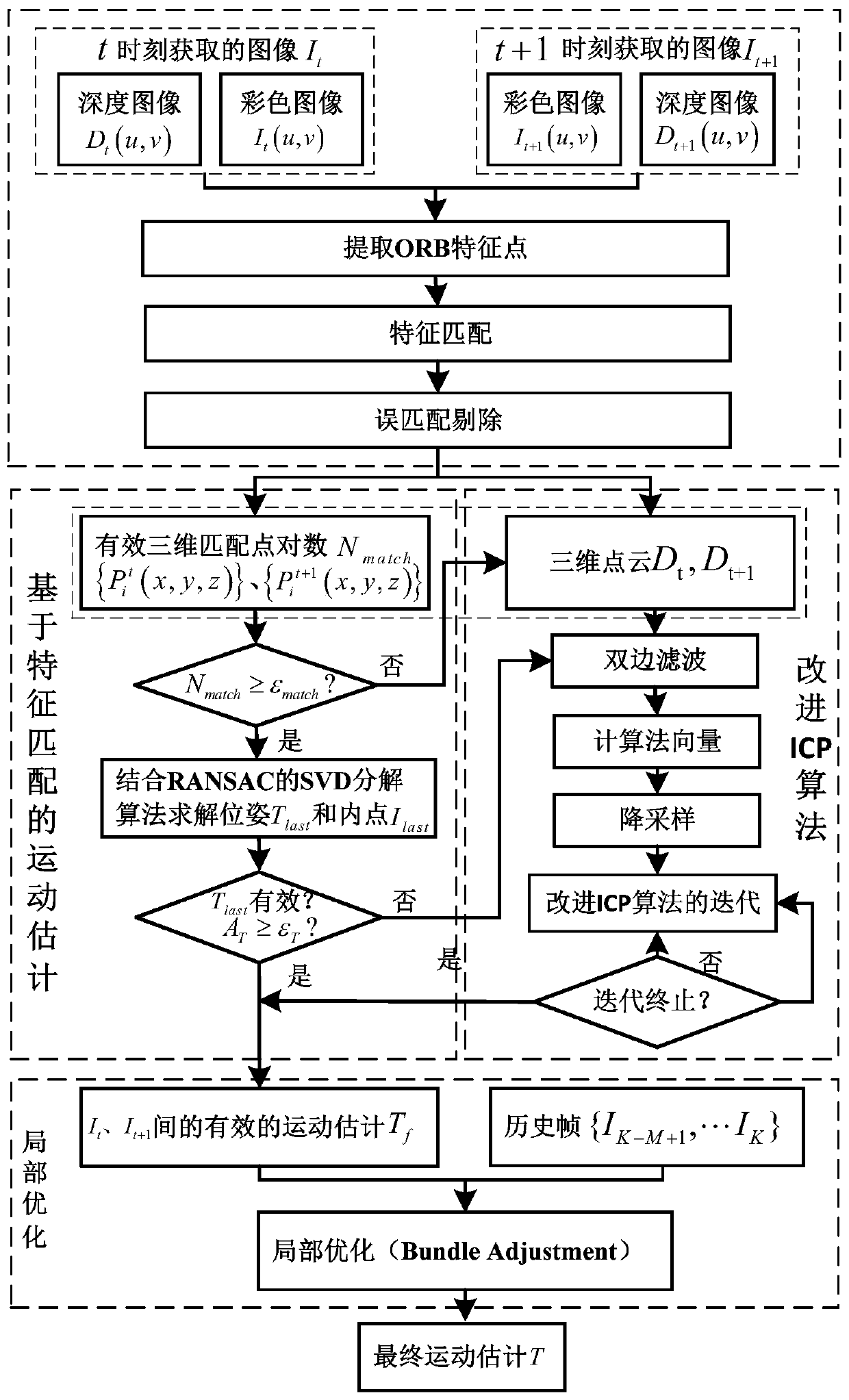Robot scene self-adaptive pose estimation method based on RGB-D camera
A technology for pose estimation and robotics, applied in instrumentation, computing, image data processing, etc., can solve problems such as algorithm failure, sparse regional scene features, and inability to obtain pose estimation
- Summary
- Abstract
- Description
- Claims
- Application Information
AI Technical Summary
Problems solved by technology
Method used
Image
Examples
Embodiment Construction
[0111] The present invention will be further described below in conjunction with the accompanying drawings and embodiments.
[0112]The RGB-D camera can simultaneously acquire a two-dimensional color image I and a three-dimensional point cloud D of the scene, wherein the two-dimensional color image I t (u,v) and 3D point cloud D t (u, v) corresponds to the pixels of the two-dimensional color image one-to-one, that is, the pixel point I of the u-th row and the v-th column in the two-dimensional color image t (u,v) and 3D point cloud D (u,v) (x, y, z) corresponding, three-dimensional point cloud D (u,v) (x, y, z) refers to the depth information of the pixels in row u and column v in the two-dimensional color image; the three-dimensional point cloud D refers to a set of three-dimensional space points corresponding to all pixels in the two-dimensional color image.
[0113] Such as figure 1 Shown, be flow chart of the present invention, a kind of robot scene adaptive pose estim...
PUM
 Login to View More
Login to View More Abstract
Description
Claims
Application Information
 Login to View More
Login to View More - R&D
- Intellectual Property
- Life Sciences
- Materials
- Tech Scout
- Unparalleled Data Quality
- Higher Quality Content
- 60% Fewer Hallucinations
Browse by: Latest US Patents, China's latest patents, Technical Efficacy Thesaurus, Application Domain, Technology Topic, Popular Technical Reports.
© 2025 PatSnap. All rights reserved.Legal|Privacy policy|Modern Slavery Act Transparency Statement|Sitemap|About US| Contact US: help@patsnap.com



